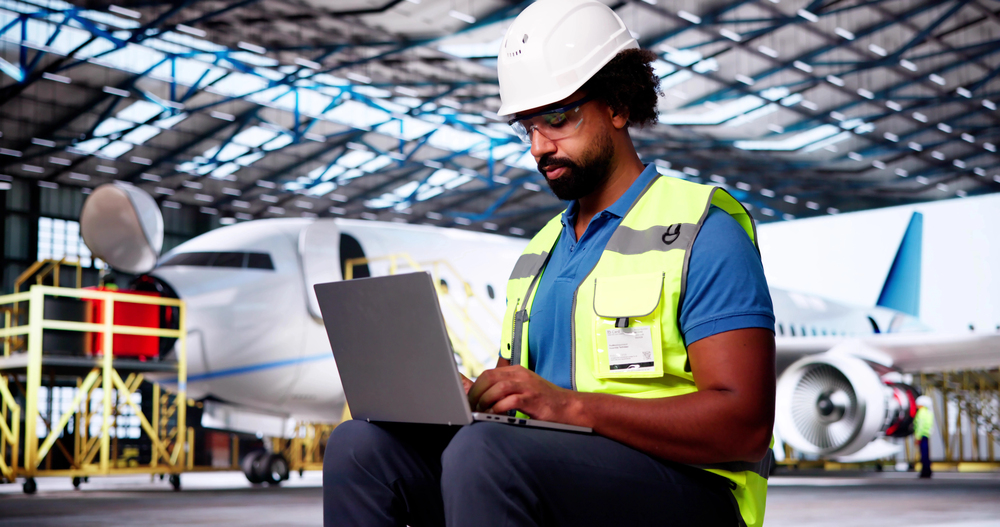The aviation industry has always depended on a well-functioning global supply chain to ensure the timely maintenance and upkeep of aircraft. However, recent global events, including the pandemic and geopolitical tensions, have caused significant disruptions in the supply chain, creating challenges for private aircraft owners and maintenance providers alike. Understanding these issues is key to navigating delays and keeping your aircraft flight-ready.
Delays in Parts and Components
One of the most visible impacts of supply chain disruptions is the delay in obtaining critical parts and components. Manufacturers are facing shortages of raw materials, labor challenges, and logistical bottlenecks, which have significantly slowed the production and delivery of essential parts like avionics systems, landing gear components, and engine parts. For private aircraft owners, these delays mean extended maintenance schedules and longer periods of downtime.

Rising Costs for Maintenance
The scarcity of parts has driven up costs across the aviation maintenance industry. When suppliers face limited stock, prices for high-demand components naturally increase. This cost is often passed on to aircraft owners, making routine maintenance more expensive. Additionally, increased transportation costs for expedited shipping of parts further add to the financial burden.
Skilled Labor Shortages
In addition to parts shortages, the aviation industry is grappling with a significant shortage of skilled maintenance technicians. This challenge, exacerbated by the pandemic and retirements of experienced workers, means longer wait times for repairs and inspections. For private aircraft owners, this highlights the importance of planning maintenance well in advance to avoid disruptions to flight schedules.

Mitigating the Impact on Aircraft Maintenance
While these supply chain challenges can feel overwhelming, there are steps private aircraft owners can take to mitigate their impact:
Step #1
Plan Maintenance Early
Schedule routine inspections and maintenance well in advance to account for potential delays in parts or labor availability.
Step #2
Maintain a Stock of Common Parts
Work with your maintenance provider to keep essential spare parts on hand for your specific aircraft model.

Step #3
Build Relationships With Reliable Vendors
Establish connections with trusted suppliers and service providers who can help prioritize your needs in times of scarcity.
Step #4
Consider Predictive Maintenance
Use advanced technologies to monitor the condition of your aircraft’s systems and address potential issues before they require major repairs.
Outlook for the Future
The aviation industry is taking significant steps to address ongoing supply chain challenges, aiming to minimize disruptions and improve the availability of critical parts. These efforts include diversifying production locations, adopting innovative manufacturing technologies, and fostering collaborations across the supply chain. While these measures are starting to show promise, full recovery will take time, requiring private aircraft owners to remain proactive in their maintenance planning. Here’s a closer look at some of the strategies shaping the future of aircraft maintenance.
Localized Production and 3D Printing
Manufacturers are investing in localized production facilities to reduce reliance on global shipping routes, which have proven vulnerable to disruptions. Additionally, the use of 3D printing for aircraft parts is gaining traction, offering a faster and more flexible way to produce components without traditional supply chain delays.

Sustainability Driving Innovation
The push for sustainability is encouraging innovations in aircraft maintenance and production. Recycling aircraft materials and adopting modular designs make it easier to repair and replace parts, reducing waste and supply chain dependency.
Collaborative Industry Efforts
Manufacturers, suppliers, and maintenance providers are working together to create more resilient supply chains. By fostering partnerships and sharing resources, the aviation industry is aiming to address bottlenecks and ensure a steady flow of essential components.
Gradual Recovery
While these strategies are promising, experts anticipate that it will take time for the supply chain to stabilize fully. Private aircraft owners should expect gradual improvements over the next few years as these solutions are implemented and refined.
These advancements signal a more resilient future for aircraft maintenance, but planning and proactive measures will remain key for navigating the ongoing challenges.
The post How Supply Chain Issues Are Affecting Aircraft Maintenance appeared first on Avion Insurance.